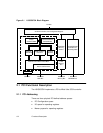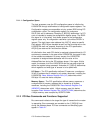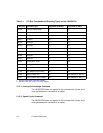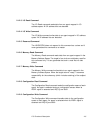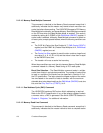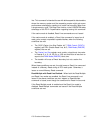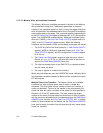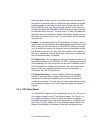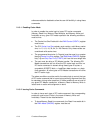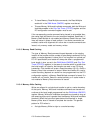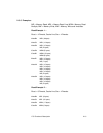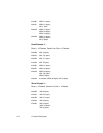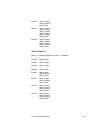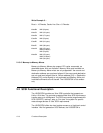2-10 Functional Description
software enabled or disabled to allow the user full flexibility in using these
commands.
2.1.3.1 Enabling Cache Mode
In order to enable the cache logic to issue PCI cache commands
(Memory Read Line, Memory Read Multiple, and Memory Write and
Invalidate) on any given PCI master operation the following conditions
must be met:
• The Cache Line Size Enable bit in the DMA Control (DCNTL) register
must be set.
• The PCI CacheLineSizeregister must contain a valid binary cache
size, i.e. 2, 4, 8, 16, 32, 64, or 128 Dwords. Only these values are
considered valid cache sizes.
• The programmed burst size (in Dwords) must be equal to or greater
than the CacheLineSizeregister. The DMA Mode (DMODE) register
bits [7:6] and Chip Test Five (CTEST5) bit 2 are the burst length bits.
• The part must be doing a PCI Master transfer. The following PCI
Master transactions do not utilize the PCI cache logic and thus no
PCI cache command is issued during these types of cycles: a
nonprefetch SCRIPTS fetch, a Load/Store data transfer, or a data
flush operation. All other types of PCI Master transactions will utilize
the PCI cache logic.
The above conditions must be met for the cache logic to control the type
of PCI cache command that is issued, along with any alignment that may
be necessary during write operations. If these conditions are not met for
any given PCI Master transaction, a Memory Read or Memory Write is
issued and no cache write alignment is done.
2.1.3.2 Issuing Cache Commands
In order to issue each type of PCI cache command, the corresponding
enable bit must be set (2 bits in the case of Memory Write and
Invalidate). These bits are detailed below:
• To issue Memory Read Line commands, the Read Line enable bit in
the DMA Mode (DMODE) register must be set.



